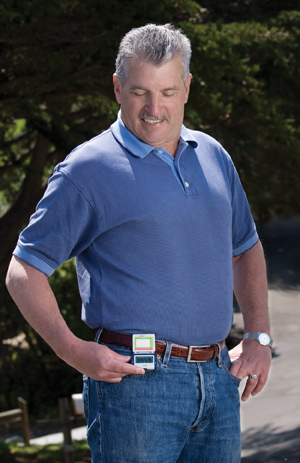Being physically active every day can help you manage your blood sugar. An active lifestyle improves your body’s ability to use insulin. Daily activity can also help delay or prevent complications of diabetes. And it’s a great way to ease stress. If you aren’t often active, see your healthcare provider before getting started. Your body will be more responsive to any insulin or other medicines you take for up to 24 hours after exercise.
How much activity do you need?
If daily activity is new to you, start slow and steady. Begin with 10 minutes of activity each day. Then work up to at least 150 minutes a week of physical activity. Don't let more than 2 days go by without being active. When sitting for long periods of time, get up for short sessions of light activity every 30 minutes.
Just move!
You don’t have to join a gym or own pricey sports equipment. Just get out and walk. Walking is exercise that makes your heart and lungs work hard. It helps your heart and blood vessels. To walk, all you need is a good pair of sneakers and your own two feet. The more you walk, the easier it gets.
-
Schedule time every day to move your feet.
-
Make it part of your daily routine.
-
Walk with a friend or a group to keep it interesting and fun.
-
Try taking several short walks during the day to meet your daily activity goal.
A pedometer makes every step count
A pedometer is a small device that keeps track of how many steps you take. You can clip it to your belt or a strap on your arm or leg and go about your daily routine. Smartphones also have apps to record your walking. At the end of the day, the pedometer shows the total number of steps you took. Use a pedometer to set daily goals for yourself. For instance, if you walk 4,000 steps a day, try adding 200 more steps each day. Aim for a goal of 7,500. With every step, you’re doing a little more to help your body use insulin.
Add strength training
Strength training makes muscles stronger. It also helps muscles use insulin better. Ask your healthcare provider if this type of exercise is right for you. If it is, your healthcare provider can help you work it into your activity plan.
Staying safe
Being active may cause blood sugar to drop faster than normal. This is especially true if you take medicine to manage your blood sugar. But there are things you can do to help reduce the risk for low blood sugar. Keep these tips in mind:
-
Always carry ID when you exercise outside your home. Carry a cellphone in case of emergency.
-
When you start an exercise program, check your blood glucose before, during, and after. This tells you how different types of activity affect you.
-
If you can, include friends and family in your activities.
-
Wear a medical ID bracelet that says you have diabetes.
-
Use the correct safety equipment for the activity you do. For example, wear a bicycle helmet when you ride a bicycle. Wear closed-toed shoes that fit your feet well and socks without seams.
-
Drink plenty of water before and during activity.
-
Keep a fast-acting sugar such as glucose tablets on hand in case of low blood sugar.
-
Do strength training first if you are doing both strength training and aerobic exercise. This is less likely to cause low blood sugar.
-
Dress correctly for the weather. Wear a hat if it’s sunny, or wait until evening if it’s too hot.
-
Try not to be active for long periods in very hot or very cold weather.
-
Skip activity if you’re sick.
-
Check your feet for sores or blisters after you exercise. Use a mirror to check the bottoms of your feet.
-
Don't do strenuous exercises that involve holding your breath or jarring motions if you have retinopathy damage in your eyes.
Notice how activity affects blood sugar
Physical activity is important when you have diabetes. But you need to watch your blood sugar level. Check often if you have been active for longer than usual. Also check your blood sugar if the activity was not planned. Make it a habit to check your blood sugar before being active. And check again a few hours later. Write down how activity affects your numbers. If you take insulin, you may be able to adjust your dose before a planned activity. This can help prevent lows. You may also need to take a small carbohydrate snack before the exercise. Talk with your healthcare provider to learn more.


